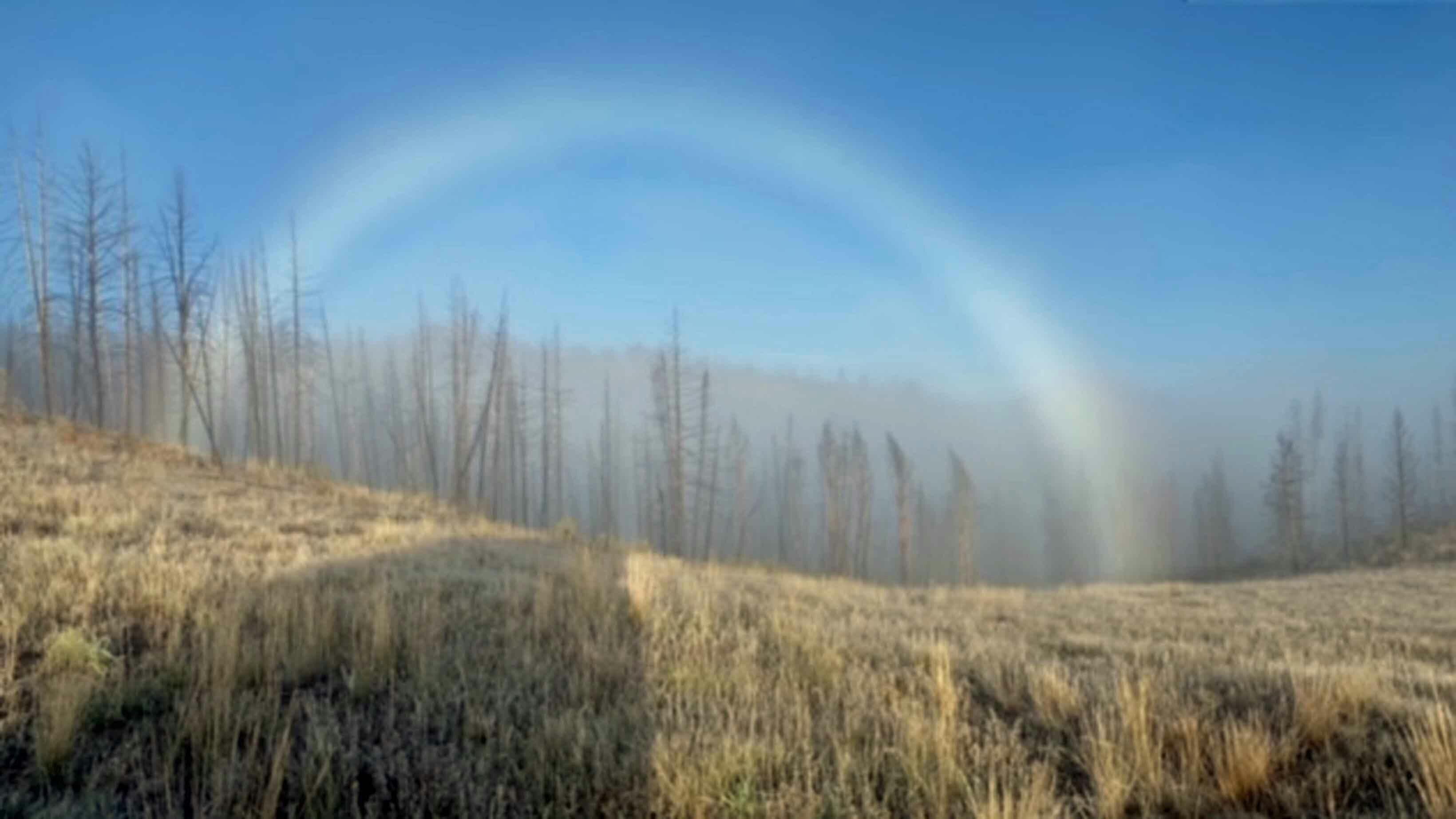Tara Holzinger wasn’t expecting to encounter a ghostly apparition near her family’s cabin in the Hoback Range near Bondurant on Sunday. But that’s what happened as she was taking a walk early on a bright, frosty morning to see an eerie-looking phenomenon stretching across the fog.
“It was super frosty and cold, probably 23 degrees,” she told Cowboy State Daily. “I saw this distinct halo of a rainbow, but it was so hard to focus with your eyes because of how bright it was.”
What she saw had the shape of a rainbow but without any of the color, like a some kind of spirit apparition. She’d never seen anything like it before in her early morning walks with her husband.
“We were in a frosty, hazy cloud when we saw it. It was super interesting,” she said.
Refraction And Diffraction
A fogbow — also called a white or ghost rainbow — is created by the same process as a regular rainbow. When there’s moisture in the air and the sun in the sky, an optical phenomena happens.
“You’re going to get some type of rainbow anytime you have the sun out on a low angle and there’s moisture or ice crystals in the air,” said Cowboy State Daily meteorologist Don Day. “If it was a cold morning, there were most likely ice crystals in the air, and the sun angle was just right to give it that white hue.”
Size makes all the difference. Rainbows are formed by the refraction and reflection of light through large water droplets, which explains how you can create a rainbow with a hose or sprinkler.
However, fogbows are created by diffraction. The water droplets in fog are smaller than raindrops, so the droplets diffract light rather than reflect it.
A fogbow is created because the water droplets are large enough to bend light into the shape of a bow, but too small to separate the individual colors of light, Day said. That droplet size difference explains the eerie white hue of fogbows.
Finding Fogbows
Fogbows aren’t rare, but they can be difficult to spot and photograph. The necessary ingredients are fog, sunlight shining in from behind the fog and no rain or heavy precipitation with large droplets of water.
Day said there’s “really nothing special” about a fogbow, but commended Holzinger for being able to capture a photo of one since fogbows don’t stick around very long.
“It was probably very brief, so she’s lucky to be able to get an image,” he said.
Holzinger didn’t even get her best view of the phenomena until she went back inside to look at the photo she captured.
“Once I took a picture and took it inside to look at it, it stood out a lot more,” she said.
There were no special photography techniques or filters used to capture the early morning fogbow. Her secret was good timing and an iPhone.
“That was straight as it was,” she said. “No editing.”
Andrew Rossi can be reached at arossi@cowboystatedaily.com.





